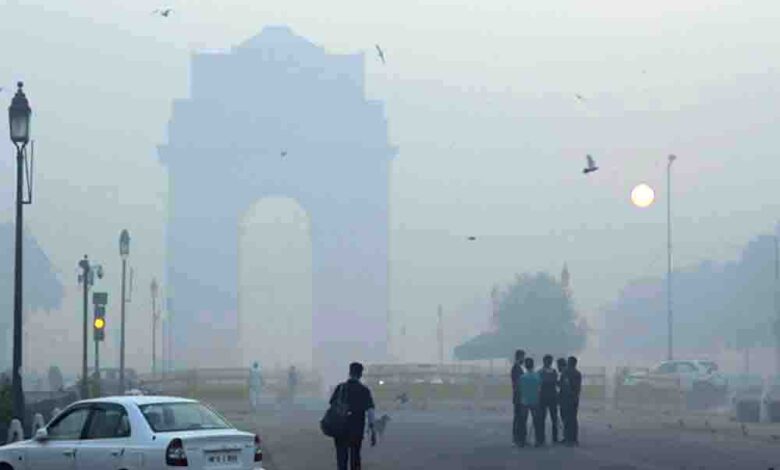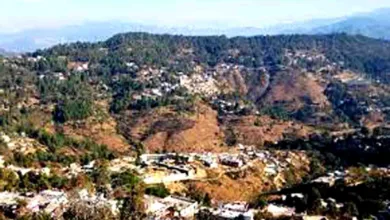Suffocation in the pollution of environmental politics

GUEST COLUMN
 Vir Singh
Vir Singh
Before the onset of winter season, the country’s capital starts suffocating and news coming from all directions starts blaming the farmers for this. From primetime debates on Doordarshan to seminars of intellectuals, farmers of Punjab, Haryana and Western Uttar Pradesh are blamed amid scenes of burning paddy straw for the poisonous smoke spreading in Delhi’s air, while the truth is something else.
The deterioration in Delhi’s air quality, which has reached a level of deep concern, is largely Delhi’s own contribution; the contribution of farmers in this is just like salt in flour. The huge number of vehicles in Delhi is not only sucking up all the oxygen from the air, it is also spewing poison into the air of Delhi. At present, approximately 1.15 crore vehicles are registered in Delhi. The smoke emitted from these vehicles contains particles like particulate matter (PM) PM2.5 and PM10, which cause respiratory problems and cardiovascular diseases arising from them. According to a report from South Asia, 40 per cent of the total pollution in Delhi comes from vehicles alone.
The amount of oxygen consumed by a car upon traveling 967 kilometers is equal to the amount of oxygen required for a person to breathe for a year. On top of that, emissions from vehicles include carbon dioxide, nitrogen oxides, carbon monoxide, carbon dioxide, ozone, peroxy acyl nitrate (PAN), volatile organic compounds (VOCs) and PM between 2.5 and 10 micrometres, polluting the entire environment, flora and fauna included. They badly affect human health.
Large scale building work, road construction, excavation here and there, and development of infrastructure in Delhi emit dust. Its share as an important source of pollution in Delhi is about 20 per cent.
The National Capital Region (NCR) in itself is also an important industrial area of the country. Factories located in Delhi and the entire NCR, especially in cities like Ghaziabad, Faridabad, Modinagar, Muradnagar etc, are major sources of the “gift” of pollution to Delhi. Delhi seems to be unaware of the fumes, harmful chemicals and carbon emissions emitted from these industries. Coal-fired power plants are also notorious sources of pollution. The smoke emitted from thermal power plants installed around Delhi contains sulfur dioxide and nitrogen oxides which are very harmful for public health. Pollution from industries and thermal power plants in Delhi and NCR account for about 20 per cent of the total pollution contribution.
The trend of burning garbage in Delhi, like in rest of the country, is no less toxic. Waste includes the burning of plastics and other harmful materials, which emit toxic gases into the air. According to the report, garbage burning contributes about 5 to 8 per cent of the total pollution in Delhi. Delhi has the world’s highest garbage mountain (call it the Everest of garbage) with heaps of garbage everywhere. The gradual biological decomposition of garbage also emits gases like ammonia, methane and carbon dioxide, which would contribute to an estimated 1 to 2 per cent of Delhi’s pollution.
Every year in October-November, farmers in Punjab, Haryana, and western Uttar Pradesh burn the stubble after harvesting paddy. This process also produces undesirable pollution, which adds a little to Delhi’s own pollution, but all sections put the blame on the farmers of the three States. According to data, stubble burning in these States increases Delhi’s pollution by about 10 per cent, while almost 90 per cent of the pollution is Delhi’s own “accomplishment”.
Despite stubble burning contributing very little to the overall pollution, according to the National Air Quality Monitoring Report, around 25-30 per cent of Delhi’s total PM 2.5 levels come from stubble burning, but the truth is that Delhi’s own pollution problem itself makes this problem more serious.
Why is there an uproar regarding pollution in Delhi only during these days and not in the remaining months of the year, when the same situation of emission of pollutants persists throughout the year? The reason for this is “inverted dispersion” of pollutants, which is a weather-related phenomenon. In this phenomenon, cold air remains towards the surface and hot air remains upwards. This layer does not allow the pollutants to spread in the upward direction, due to which they get collected on the surface only. As a result, pollutants emitted get trapped in the atmosphere, causing poor air quality.
When the sun shines in Delhi city, photochemical smog is produced as a result of chemical processes of pollutants in the atmosphere. The smog covers the ambient environment of cities with a poisonous blanket. It is caused by a chemical reaction between nitrogen oxides and volatile organic compounds (VOCs) catalyzed by solar ultraviolet radiation, leading to the formation of ground-level ozone and PAN (peroxy acyl nitrate) as the main products of smog.
As Delhi grapples with rising air pollution, former AIIMS director Dr Randeep Guleria has warned that air pollution could cause more deaths than Covid-19. A 2021 report by the Health Effects Institute said that about eight million people died in the world due to air pollution. This is more than the number of people who have died due to Covid-19. Dr Guleria said, “We are worried about Covid, but we are not worried about air pollution.”
Additional solicitor general Aishwarya Bhati, on behalf for the Central government, said Section 15 of the CAQM Act, which deals with penalty for stubble burning, will be effectively implemented. She said an adjudicating officer would be appointed and all necessary action would be taken to implement the law effectively. Ultimately, there is a preparation to make the farmers who burn stubble the scapegoats.
It is true that incidents of stubble burning are polluting and there should be a complete ban on farmers doing so and there should also be a provision for punishment for those who disobey the law, even though farmers contribute only 10 percent to Delhi’s pollution by burning stubble. But there should be some concrete policy on what action should be taken against those who contribute 90 percent to Delhi’s pollution. How can ten percent pollution be sin and 90 per cent virtue?
If the pollution generated by farmers spoils the air of Delhi, then the pollution many times greater in Delhi would also be hurting the farmers of Punjab, Haryana and Western Uttar Pradesh, affecting their health. But the farmers never blamed Delhi which keeps cursing them these days.
The country’s capital can be saved from becoming a gas chamber by preventing pollution from its own sources. Delhi also needs to be free from the dark shadow of pollution of environmental politics.
(The author is professor emeritus, environmental science, GB Pant University of Agriculture and Technology. Views expressed are personal)






